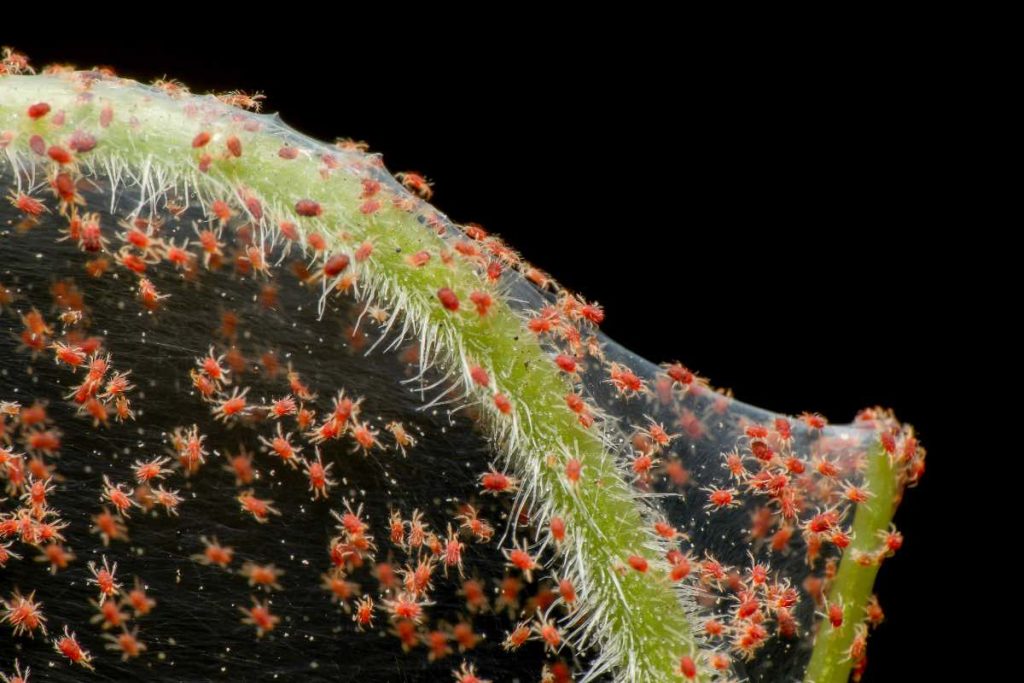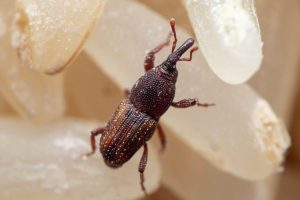Spider mites on roses can be a frustrating problem for gardeners and rose enthusiasts. These tiny arachnids, barely visible to the naked eye, can wreak havoc on the beauty and health of your beloved roses. In this article, we will delve into the world of spider mites on roses, exploring their life cycle, reasons for infestation, and effective ways to combat them.
Understanding Spider Mites on Roses
Spider mites are not true insects; they belong to the arachnid family, making them distant relatives of spiders and ticks. These minuscule pests measure around 1/50 of an inch and are often reddish-brown or pale yellow in color. They have eight legs and a unique ability to produce silk, which they use to spin protective webs over the leaves and buds of roses.
The Life Cycle of Spider Mites on Roses
Spider mites have a short life cycle, and their reproduction rate is astonishingly rapid, leading to explosive population growth. Female spider mites lay eggs on the undersides of rose leaves, where they hatch within a few days. The nymphs emerge and mature into adults within a week, continuing the cycle. In warm and dry conditions, this life cycle can be completed in as little as one week, accelerating the infestation.
Why Do Roses Get Spider Mites?
Understanding the reasons behind a spider mite infestation on roses is crucial for effective prevention and control. Several factors contribute to their appearance:
- Warm and Dry Weather: Spider mites thrive in hot and dry environments, making roses susceptible during the summer months when conditions are favorable.
- Lack of Natural Predators: In balanced ecosystems, natural predators like ladybugs and lacewings keep spider mite populations in check. However, in gardens disrupted by pesticides, these predators may be scarce, allowing spider mites to proliferate.
- Overcrowded Plants: Roses that are planted too close together can create an environment where spider mites can easily move from one plant to another, accelerating the infestation process.
- Stressed Plants: Unhealthy or stressed roses are more susceptible to spider mite attacks. Ensuring proper watering and nutrient supply can help improve the overall resilience of your rose bushes.

How to Identify Spider Mite Infestation on Roses
Spotting spider mite infestations in their early stages is essential for effective control. Look out for these tell-tale signs:
- Fine Webbing: Spider mites create fine silk webbing on the undersides of leaves and buds, which is a distinctive sign of their presence.
- Discolored Leaves: Infested rose leaves may develop yellow speckles or stippling caused by the mites feeding on the plant’s chlorophyll.
- Leaf Curling: As the infestation worsens, rose leaves may curl and become distorted, further compromising the plant’s health.
How to Get Rid of Spider Mites on Roses
When dealing with spider mites on roses, it is crucial to act promptly to prevent further damage. Here are effective methods for control:
1. Regularly Inspect Your Roses
Regularly inspect your roses, paying close attention to the undersides of leaves, where spider mites prefer to hide. Early detection can make a significant difference in the success of your control efforts.
2. Blast Them Off
A simple yet effective method is to use a strong stream of water to wash away spider mites from your rose bushes. This can be done using a garden hose or a handheld sprayer. Be sure to target the undersides of leaves where the mites tend to congregate.
3. Pruning Infested Leaves
If the infestation is limited to specific parts of the rose bush, consider pruning the affected leaves and disposing of them far from the garden. This can help prevent further spread.
4. Beneficial Insects
Introducing beneficial insects like ladybugs, predatory mites, or lacewings can help keep spider mite populations in check. These natural predators feed on spider mites and can provide a sustainable and eco-friendly solution to your infestation problem.
5. Increase Humidity
Spider mites thrive in dry environments, so increasing humidity around your rose plants can be an effective deterrent. You can achieve this by misting the leaves regularly with water or placing a tray of water near the roses to add moisture to the air. However, be cautious not to overwater your plants, as excessive moisture can lead to other issues like fungal diseases.
6. Rotate Pesticides
If you find it necessary to use chemical pesticides, rotate between different active ingredients to prevent the spider mites from developing resistance. Pesticide resistance is a common issue among spider mites, so switching between products with different modes of action can be more effective in the long run.
7. Use a Miticide
When natural and homemade remedies aren’t sufficient to curb the spider mite population, miticides can be a powerful tool. Miticides are specifically designed to target mites and can provide fast and effective results. However, exercise caution while using miticides, as some formulations may harm beneficial insects and pollinators. Always follow the manufacturer’s instructions and use them as a last resort.
What Insecticide Kills Spider Mites?
In severe infestations, you may need to resort to insecticides. However, it is essential to choose the right product that effectively targets spider mites while minimizing harm to beneficial insects and the environment.
1. Neem Oil
Neem oil is a popular choice for organic gardeners as it is derived from the neem tree and poses minimal risk to beneficial insects. It works by disrupting the feeding and reproductive behaviors of spider mites, eventually leading to their demise.
2. Insecticidal Soap
Insecticidal soaps are another eco-friendly option to combat spider mites. These soaps work by suffocating the pests, penetrating their protective webs, and disrupting their cellular membranes.
3. Horticultural Oils
Horticultural oils, such as mineral oil or petroleum-based oils, can effectively smother spider mites and their eggs. Ensure to apply these oils when the temperature is below 90°F to avoid damaging your rose plants.
Read also: How to get rid of rice weevils
Natural Remedies for Rose Mites
For those seeking natural alternatives, there are several home remedies that can help control spider mites on roses without resorting to harsh chemicals:
1. Garlic Spray
A homemade garlic spray can deter spider mites from infesting your roses. To make the spray, blend several cloves of garlic with water and let it steep overnight. Strain the mixture and spray it on your rose bushes.
2. Peppermint Oil Solution
Peppermint oil is known for its pest-repelling properties. Mix a few drops of peppermint essential oil with water and a small amount of dish soap. Spray this solution on your roses to deter spider mites.
3. Alcohol Spray
A simple alcohol spray can also help control spider mites. Mix rubbing alcohol with water in a 1:1 ratio and spray it on the affected plants. This will dehydrate the mites and effectively kill them.
Read also: How to get rid of bean weevils
The bottom line
Spider mites on roses can be a persistent problem, but with the right approach, you can prevent infestations and effectively control existing ones. Regular inspections, proper plant care, and the use of natural remedies or targeted insecticides can keep your rose garden thriving and free from the menace of spider mites. Embrace a holistic and environmentally friendly approach to gardening to ensure the health and beauty of your roses for years to come.

